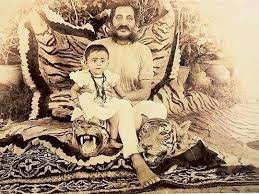Table of Contents
The title “Tees Maar Khan” refers to the 6th Nizam of Hyderabad, Mir Mahbub Ali Khan, who ruled from 1869 to 1911. The nickname, which translates to “one who kills thirty,” was earned due to his feat of hunting and killing 33 tigers. This accomplishment, though controversial by today’s conservation standards, highlighted his bravery and earned him legendary status among his subjects.

Hunting Exploits and Leadership
Mir Mahbub Ali Khan’s tiger hunting was not just a pastime but also a demonstration of his leadership and courage. In an era where rulers were often seen as protectors from wild threats, his actions reinforced his image as a strong and fearless leader. His hunting expeditions became a part of his public persona and contributed to the folklore surrounding his reign.
Administrative Reforms and Contributions
Despite the focus on his hunting exploits, the 6th Nizam’s reign was also marked by significant administrative and infrastructural contributions. He modernized the state’s administration, introduced reforms in various sectors, and was known for his philanthropy. His contributions to education, healthcare, and public welfare were notable. He established several institutions, including the famous Mahbubia Girls School, which was a significant step towards promoting female education in the region.

He was a man deeply inspired, driven, and even obsessed by an unwavering desire to uplift the condition of his people. The sixth Nizam actively engaged in the state’s administration, particularly after the passing of his capable Prime Minister, Salar Jung. His persistent efforts were focused on regulating the state’s finances, though he faced numerous challenges due to the financial inexperience of otherwise competent ministers. His people endured hardships such as floods, famine, and the repercussions of British policies.
Despite these challenges, the sixth Nizam managed not only to reduce corruption but, after 1901—with the ministerial support of Maharaja Kishen Pershad and the assistance of J.C. Walker, the Financial Adviser (later Minister)—he also achieved economic stability. It was through the dedication of the sixth Nizam and other talented individuals that the state began to flourish, leading to improved well-being for its people.
The sixth Nizam, deeply loved by the people of Hyderabad, earned the title “Mahbub” (beloved). On many occasions, he would don the disguise of a poor man at night and venture out incognito to mingle with the people on the streets and in the tea houses, known as ‘chai khanas.’ There, he would listen to their grievances and aspirations, believing that he could serve them best by hearing their concerns firsthand.
A man of great heart, he balanced his pursuit of pleasure with a strong commitment to his duties, displaying dignity, compassion, humility, unwavering integrity, and boundless generosity. His greatest joy came from the happiness of the people of Hyderabad.
Cultural Patronage
Mir Mahbub Ali Khan was also a patron of culture and the arts. His court was a center for cultural activities, attracting poets, artists, and scholars. This patronage helped preserve and promote the rich cultural heritage of Hyderabad, making it a thriving center for the arts during his reign.
Legacy
The legacy of the 6th Nizam is a complex interplay of valor, administrative acumen, and cultural patronage. His title “Tees Maar Khan” remains a part of popular culture, symbolizing his daring nature. However, his contributions to the development and modernization of Hyderabad are equally significant and continue to be remembered and appreciated.
In summary, Tees Maar Khan was not just a tiger hunter but a ruler who left a lasting impact on Hyderabad through his leadership, reforms, and cultural contributions. His legacy is a blend of folklore and historical significance, reflecting the multifaceted nature of his reign.



